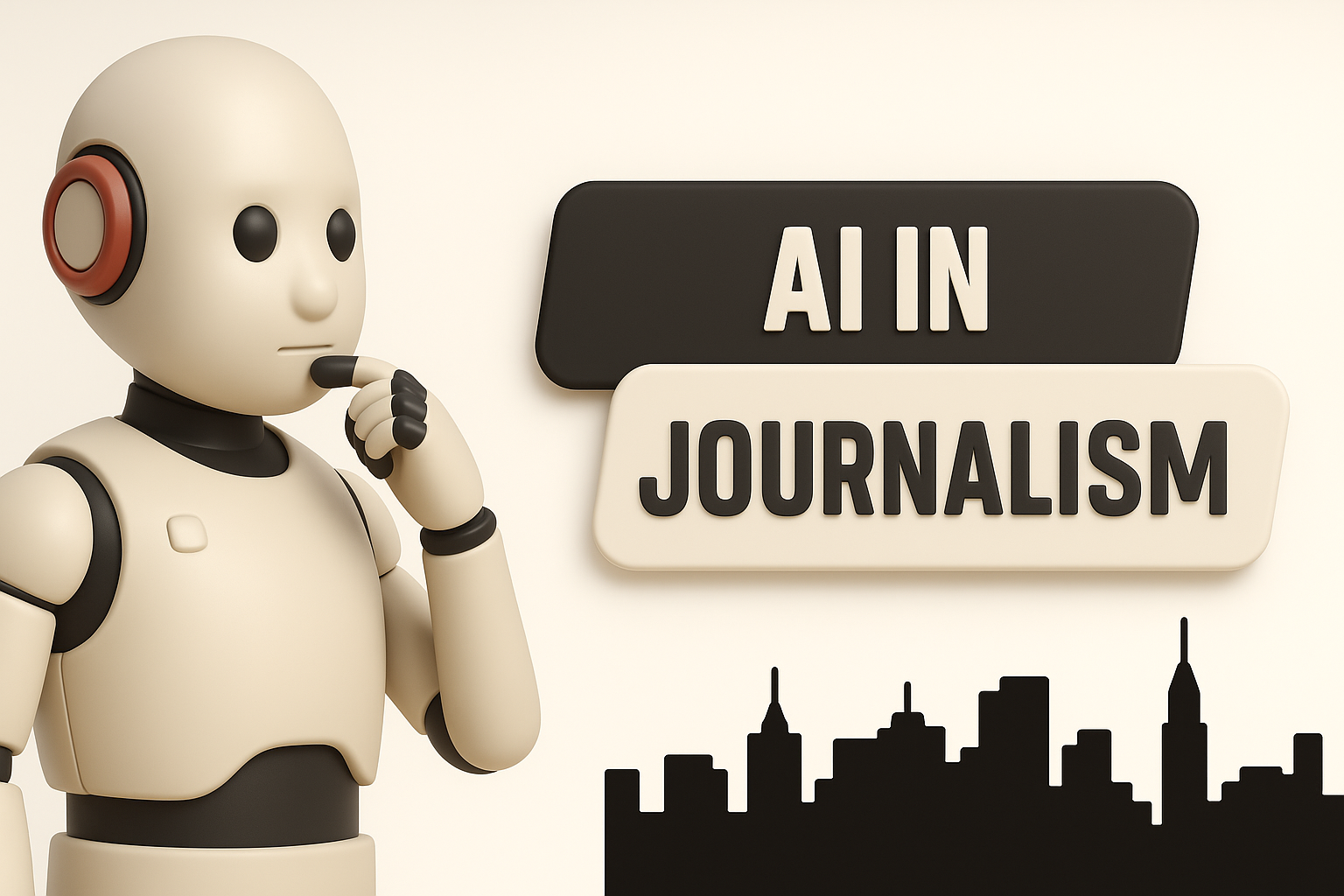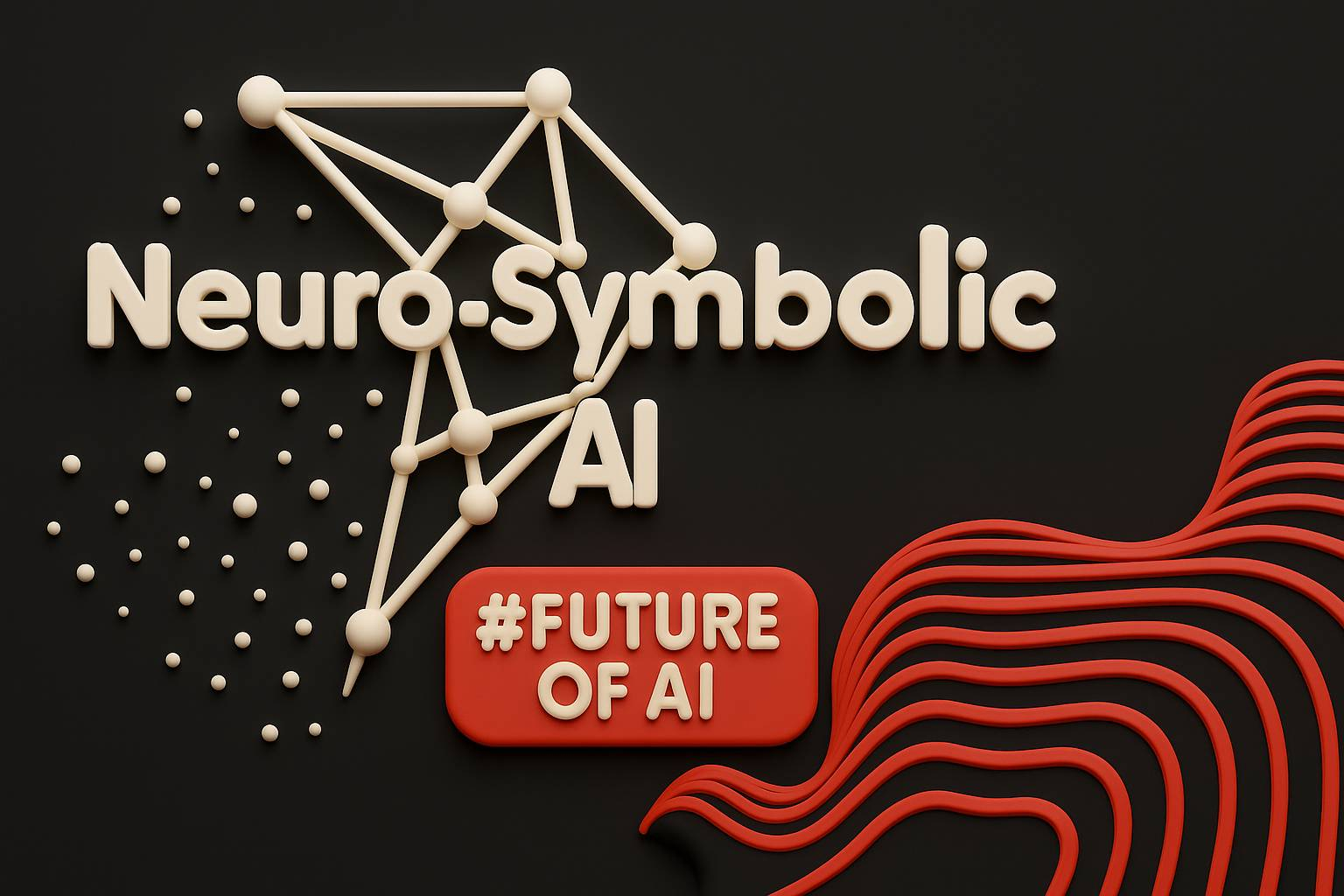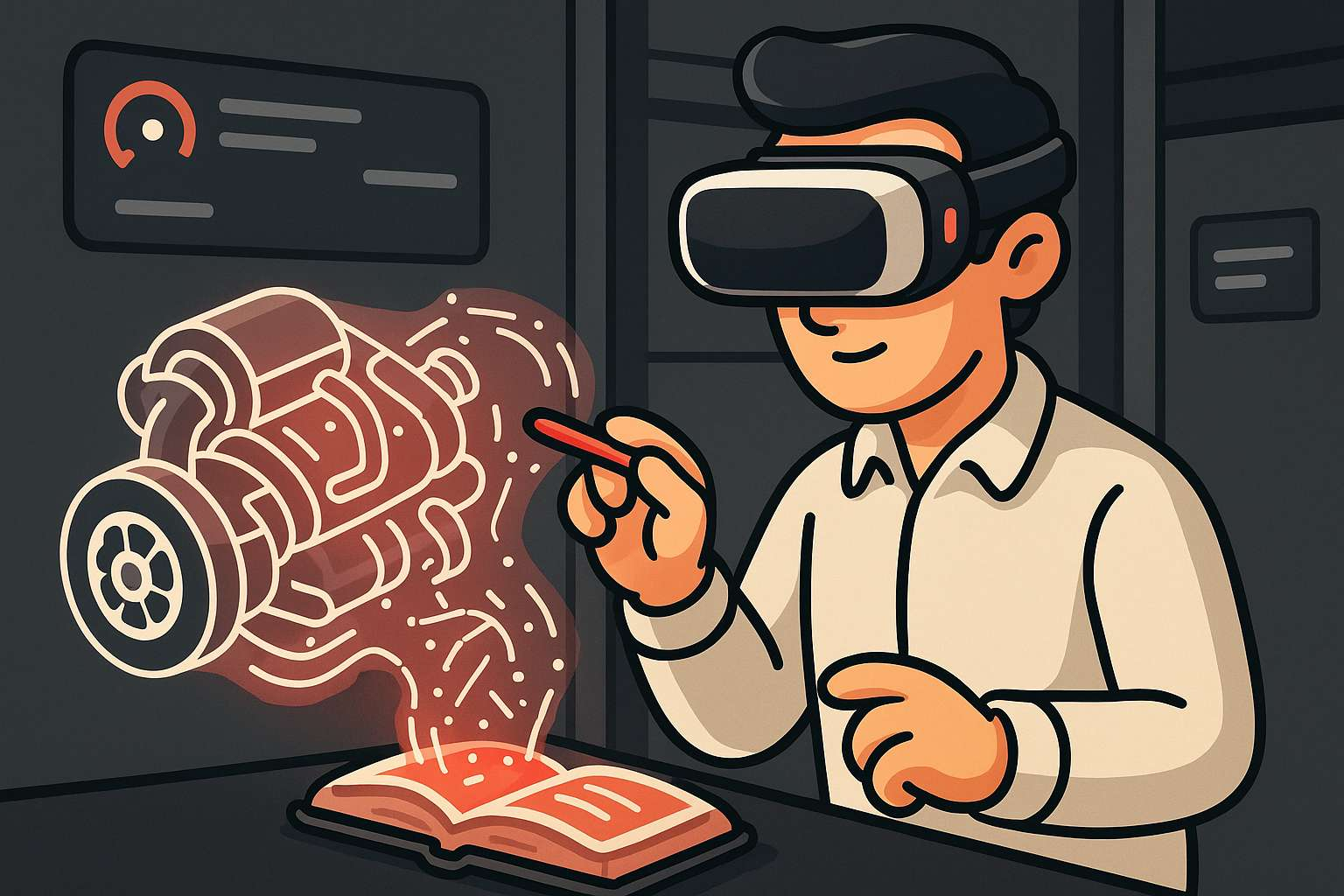AI-Powered Journalism: The Rise of Automated Investigations
Journalism is entering a new era—where algorithms don’t just write headlines but dig deep, connect dots, and uncover hidden truths. AI-powered journalism is moving beyond content generation into the realm of automated investigations.
🤖 From scanning millions of documents to analyzing financial transactions and social media chatter, AI tools are becoming digital detectives that help reporters uncover stories that would take humans months—or even years—to piece together.
🔍 𝐇𝐞𝐫𝐞’𝐬 𝐡𝐨𝐰 𝐀𝐈 𝐢𝐬 𝐫𝐞𝐬𝐡𝐚𝐩𝐢𝐧𝐠 𝐢𝐧𝐯𝐞𝐬𝐭𝐢𝐠𝐚𝐭𝐢𝐯𝐞 𝐣𝐨𝐮𝐫𝐧𝐚𝐥𝐢𝐬𝐦:
✅ 𝐃𝐚𝐭𝐚 𝐌𝐢𝐧𝐢𝐧𝐠 𝐚𝐭 𝐒𝐜𝐚𝐥𝐞
AI can process terabytes of leaked documents, government filings, and corporate records—surfacing anomalies, patterns, and red flags instantly.
✅ 𝐀𝐝𝐯𝐚𝐧𝐜𝐞𝐝 𝐍𝐚𝐭𝐮𝐫𝐚𝐥 𝐋𝐚𝐧𝐠𝐮𝐚𝐠𝐞 𝐏𝐫𝐨𝐜𝐞𝐬𝐬𝐢𝐧𝐠
From detecting propaganda to identifying misinformation campaigns, AI can parse language nuances across multiple languages in seconds.
✅ 𝐂𝐨𝐧𝐧𝐞𝐜𝐭𝐢𝐧𝐠 𝐭𝐡𝐞 𝐃𝐨𝐭𝐬
Graph AI and knowledge networks help journalists trace links between people, companies, and events—uncovering hidden relationships.
✅ 𝐑𝐞𝐚𝐥-𝐓𝐢𝐦𝐞 𝐌𝐨𝐧𝐢𝐭𝐨𝐫𝐢𝐧𝐠
AI continuously monitors news sources, social feeds, and government databases, flagging developments that could evolve into major investigations.
✅ 𝐂𝐨𝐦𝐛𝐚𝐭𝐢𝐧𝐠 𝐃𝐢𝐬𝐢𝐧𝐟𝐨𝐫𝐦𝐚𝐭𝐢𝐨𝐧
Automated fact-checking tools cross-verify claims in real time, helping reporters counter fake news with evidence-based insights.
📌 𝐓𝐡𝐞 𝐁𝐢𝐠 𝐏𝐢𝐜𝐭𝐮𝐫𝐞:
AI won’t replace investigative journalists—but it will supercharge their work. By handling the heavy lifting of data crunching and pattern recognition, AI allows humans to do what they do best: ask tough questions, tell compelling stories, and hold power accountable.
🔗 Read More: https://technologyaiinsights.com/
📣 About AI Technology Insights (AITin):
AI Technology Insights (AITin) is the fastest-growing global community of thought leaders, influencers, and researchers specializing in AI, Big Data, Analytics, Robotics, Cloud Computing, and related technologies. Through its platform, AITin offers valuable insights from industry executives and pioneers who share their journeys, expertise, success stories, and strategies for building profitable, forward-thinking businesses.
📍 𝐀𝐝𝐝𝐫𝐞𝐬𝐬: 1846 E Innovation Park DR, Ste 100, Oro Valley, AZ 85755
📧 𝐄𝐦𝐚𝐢𝐥: sales@intentamplify.com
📲 𝐂𝐚𝐥𝐥: +1 (845) 347-8894
Journalism is entering a new era—where algorithms don’t just write headlines but dig deep, connect dots, and uncover hidden truths. AI-powered journalism is moving beyond content generation into the realm of automated investigations.
🤖 From scanning millions of documents to analyzing financial transactions and social media chatter, AI tools are becoming digital detectives that help reporters uncover stories that would take humans months—or even years—to piece together.
🔍 𝐇𝐞𝐫𝐞’𝐬 𝐡𝐨𝐰 𝐀𝐈 𝐢𝐬 𝐫𝐞𝐬𝐡𝐚𝐩𝐢𝐧𝐠 𝐢𝐧𝐯𝐞𝐬𝐭𝐢𝐠𝐚𝐭𝐢𝐯𝐞 𝐣𝐨𝐮𝐫𝐧𝐚𝐥𝐢𝐬𝐦:
✅ 𝐃𝐚𝐭𝐚 𝐌𝐢𝐧𝐢𝐧𝐠 𝐚𝐭 𝐒𝐜𝐚𝐥𝐞
AI can process terabytes of leaked documents, government filings, and corporate records—surfacing anomalies, patterns, and red flags instantly.
✅ 𝐀𝐝𝐯𝐚𝐧𝐜𝐞𝐝 𝐍𝐚𝐭𝐮𝐫𝐚𝐥 𝐋𝐚𝐧𝐠𝐮𝐚𝐠𝐞 𝐏𝐫𝐨𝐜𝐞𝐬𝐬𝐢𝐧𝐠
From detecting propaganda to identifying misinformation campaigns, AI can parse language nuances across multiple languages in seconds.
✅ 𝐂𝐨𝐧𝐧𝐞𝐜𝐭𝐢𝐧𝐠 𝐭𝐡𝐞 𝐃𝐨𝐭𝐬
Graph AI and knowledge networks help journalists trace links between people, companies, and events—uncovering hidden relationships.
✅ 𝐑𝐞𝐚𝐥-𝐓𝐢𝐦𝐞 𝐌𝐨𝐧𝐢𝐭𝐨𝐫𝐢𝐧𝐠
AI continuously monitors news sources, social feeds, and government databases, flagging developments that could evolve into major investigations.
✅ 𝐂𝐨𝐦𝐛𝐚𝐭𝐢𝐧𝐠 𝐃𝐢𝐬𝐢𝐧𝐟𝐨𝐫𝐦𝐚𝐭𝐢𝐨𝐧
Automated fact-checking tools cross-verify claims in real time, helping reporters counter fake news with evidence-based insights.
📌 𝐓𝐡𝐞 𝐁𝐢𝐠 𝐏𝐢𝐜𝐭𝐮𝐫𝐞:
AI won’t replace investigative journalists—but it will supercharge their work. By handling the heavy lifting of data crunching and pattern recognition, AI allows humans to do what they do best: ask tough questions, tell compelling stories, and hold power accountable.
🔗 Read More: https://technologyaiinsights.com/
📣 About AI Technology Insights (AITin):
AI Technology Insights (AITin) is the fastest-growing global community of thought leaders, influencers, and researchers specializing in AI, Big Data, Analytics, Robotics, Cloud Computing, and related technologies. Through its platform, AITin offers valuable insights from industry executives and pioneers who share their journeys, expertise, success stories, and strategies for building profitable, forward-thinking businesses.
📍 𝐀𝐝𝐝𝐫𝐞𝐬𝐬: 1846 E Innovation Park DR, Ste 100, Oro Valley, AZ 85755
📧 𝐄𝐦𝐚𝐢𝐥: sales@intentamplify.com
📲 𝐂𝐚𝐥𝐥: +1 (845) 347-8894
AI-Powered Journalism: The Rise of Automated Investigations
Journalism is entering a new era—where algorithms don’t just write headlines but dig deep, connect dots, and uncover hidden truths. AI-powered journalism is moving beyond content generation into the realm of automated investigations.
🤖 From scanning millions of documents to analyzing financial transactions and social media chatter, AI tools are becoming digital detectives that help reporters uncover stories that would take humans months—or even years—to piece together.
🔍 𝐇𝐞𝐫𝐞’𝐬 𝐡𝐨𝐰 𝐀𝐈 𝐢𝐬 𝐫𝐞𝐬𝐡𝐚𝐩𝐢𝐧𝐠 𝐢𝐧𝐯𝐞𝐬𝐭𝐢𝐠𝐚𝐭𝐢𝐯𝐞 𝐣𝐨𝐮𝐫𝐧𝐚𝐥𝐢𝐬𝐦:
✅ 𝐃𝐚𝐭𝐚 𝐌𝐢𝐧𝐢𝐧𝐠 𝐚𝐭 𝐒𝐜𝐚𝐥𝐞
AI can process terabytes of leaked documents, government filings, and corporate records—surfacing anomalies, patterns, and red flags instantly.
✅ 𝐀𝐝𝐯𝐚𝐧𝐜𝐞𝐝 𝐍𝐚𝐭𝐮𝐫𝐚𝐥 𝐋𝐚𝐧𝐠𝐮𝐚𝐠𝐞 𝐏𝐫𝐨𝐜𝐞𝐬𝐬𝐢𝐧𝐠
From detecting propaganda to identifying misinformation campaigns, AI can parse language nuances across multiple languages in seconds.
✅ 𝐂𝐨𝐧𝐧𝐞𝐜𝐭𝐢𝐧𝐠 𝐭𝐡𝐞 𝐃𝐨𝐭𝐬
Graph AI and knowledge networks help journalists trace links between people, companies, and events—uncovering hidden relationships.
✅ 𝐑𝐞𝐚𝐥-𝐓𝐢𝐦𝐞 𝐌𝐨𝐧𝐢𝐭𝐨𝐫𝐢𝐧𝐠
AI continuously monitors news sources, social feeds, and government databases, flagging developments that could evolve into major investigations.
✅ 𝐂𝐨𝐦𝐛𝐚𝐭𝐢𝐧𝐠 𝐃𝐢𝐬𝐢𝐧𝐟𝐨𝐫𝐦𝐚𝐭𝐢𝐨𝐧
Automated fact-checking tools cross-verify claims in real time, helping reporters counter fake news with evidence-based insights.
📌 𝐓𝐡𝐞 𝐁𝐢𝐠 𝐏𝐢𝐜𝐭𝐮𝐫𝐞:
AI won’t replace investigative journalists—but it will supercharge their work. By handling the heavy lifting of data crunching and pattern recognition, AI allows humans to do what they do best: ask tough questions, tell compelling stories, and hold power accountable.
🔗 Read More: https://technologyaiinsights.com/
📣 About AI Technology Insights (AITin):
AI Technology Insights (AITin) is the fastest-growing global community of thought leaders, influencers, and researchers specializing in AI, Big Data, Analytics, Robotics, Cloud Computing, and related technologies. Through its platform, AITin offers valuable insights from industry executives and pioneers who share their journeys, expertise, success stories, and strategies for building profitable, forward-thinking businesses.
📍 𝐀𝐝𝐝𝐫𝐞𝐬𝐬: 1846 E Innovation Park DR, Ste 100, Oro Valley, AZ 85755
📧 𝐄𝐦𝐚𝐢𝐥: sales@intentamplify.com
📲 𝐂𝐚𝐥𝐥: +1 (845) 347-8894
0 Комментарии
0 Поделились





